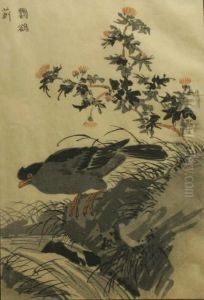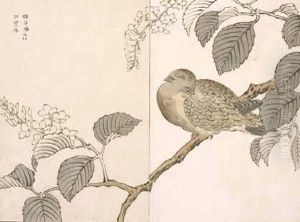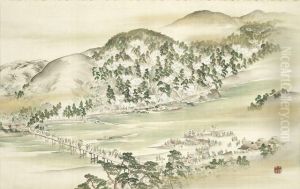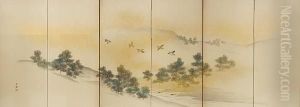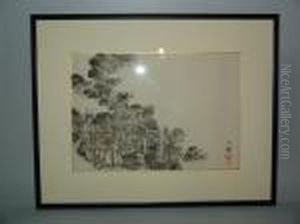Maekawa Bunrin Paintings
Maekawa Bunrin was a Japanese painter who lived during the late Edo period and into the Meiji period. He was born in 1818 in Kyoto, Japan, into a family of textile merchants. However, Bunrin pursued a career in the arts, an interest that diverged from his family's business. Despite this, his background in textiles may have influenced his sense of design and color in his paintings.
Bunrin studied under the Maruyama-Shijo school of painting, which was known for its blend of traditional Japanese techniques with a more realistic, Western-influenced approach to painting. This school was founded by Maruyama Okyo and later led by Okyo's student, Shiokawa Bunrin, from whom Maekawa Bunrin would take his go (art name) after Shiokawa's death, as a way to honor his teacher.
Maekawa Bunrin's works are characterized by their detailed depiction of nature, often focused on landscapes, flowers, and birds. His paintings show an adept use of traditional Japanese pigments and a mastery of brushwork, with a particular emphasis on the nuanced portrayal of trees and foliage, which became a hallmark of his style. Bunrin's work reflects a departure from the more decorative styles of the time, favoring a more subdued and realistic representation.
Despite his talents, Bunrin did not achieve significant fame during his lifetime. It was only posthumously that his work began to be more widely recognized and appreciated. Bunrin's paintings are now considered an important part of the transition from Edo period art to Meiji period art, marking a period of significant cultural change in Japan.
Maekawa Bunrin passed away in 1878, having contributed to the evolution of Japanese painting through his subtle and refined approach to the traditional subjects of nature. Today, his works are held in various collections around the world, including in museums in Japan, and they continue to be studied and admired for their beauty and historical significance.
